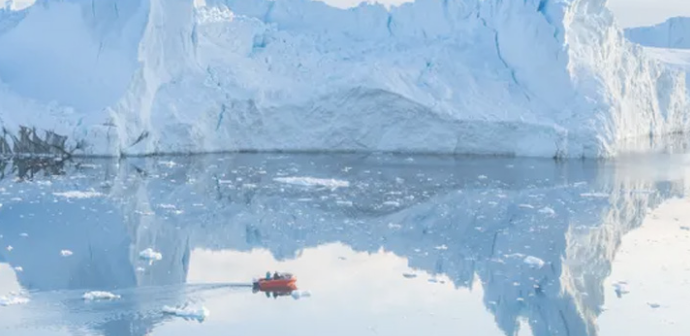Desk report: For the first time in the history of the Memorial, there has been rain on the icebergs of Greenland. It’s not raining again, it’s been raining for hours on end. According to the US National Snow and Ice Data Center, temperatures were above freezing for nine hours when it rained on a 3,216-meter-high iceberg in Greenland on August 14. Temperatures on icebergs usually never rise above freezing. But in less than three decades, such incidents have occurred at least three times. A total of 6 billion tons of rainfall has been recorded in Greenland in the last three days from 14 to 16 August. This is the highest data collection since 1950. Scientists see this rainfall as a new concern as the polar ice caps are melting as a result of warming due to the effects of climate change. Glaciologist Indrani Das of Columbia University’s Lamont-Doherty Earth Observatory said the rainfall in Greenland was not a good sign for the iceberg. The water on the ice is very bad. This causes the surface of the ice to melt more. Water is warmer than ice, not only that, rain water is darker than ice. As a result, more water is absorbed than reflected by sunlight. This water is melting in the sea-ocean and increasing the water level. Scientists believe that Greenland’s ice is melting the most after Antarctica. And over the past few decades, this water has been responsible for a 25 percent rise in global sea levels. As global temperatures rise, this rate is expected to rise further. Rainfall and high temperatures have also increased the amount of ice melting across the island. The amount of snow that melted on August 15 is seven times more than normal in mid-August. The record rainfall is a new warning about the effects of climate change on Greenland’s ice. Greenland had the most snowmelt in late July. The amount of ice that melted in one day at that time was enough to submerge the entire state of Florida in the United States in two inches of water. This rate of ice melting and last week’s rain both occurred due to the type of windfall যার meant that warm and humid winds temporarily covered Greenland. Twilla Moon, a scientist at the National Snow and Ice Data Center in the United States, said the disturbing rain at Greenland’s highest peak was not an isolated incident. We must focus on adaptation. At the same time, the risk of destruction must be reduced. According to him, like the rising floods, fires and many other natural disasters, it is also a warning, reminding us of the need to reduce greenhouse gases.
Concerns are mounting over rain on Greenland’s snowy peaks
0
Share.




